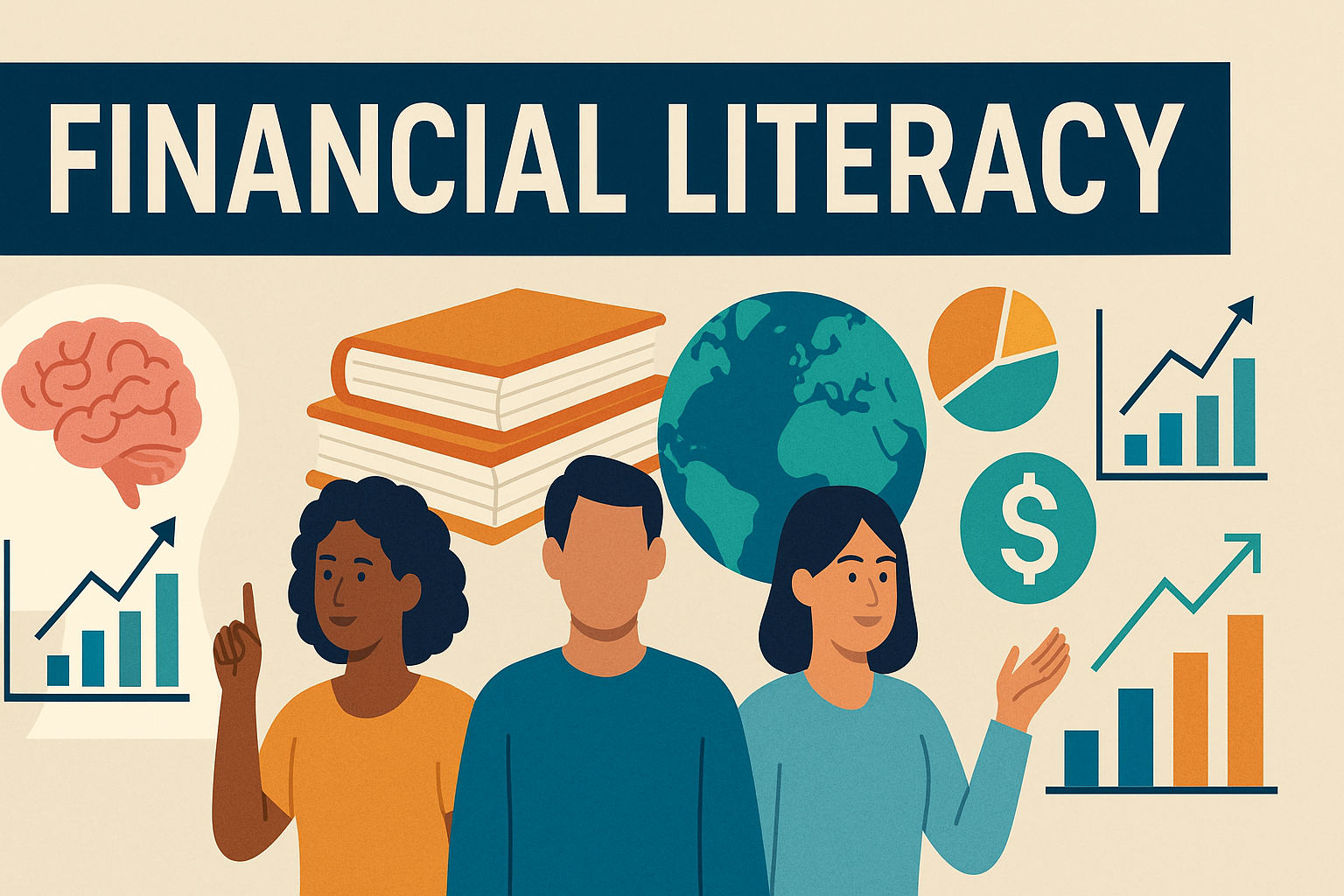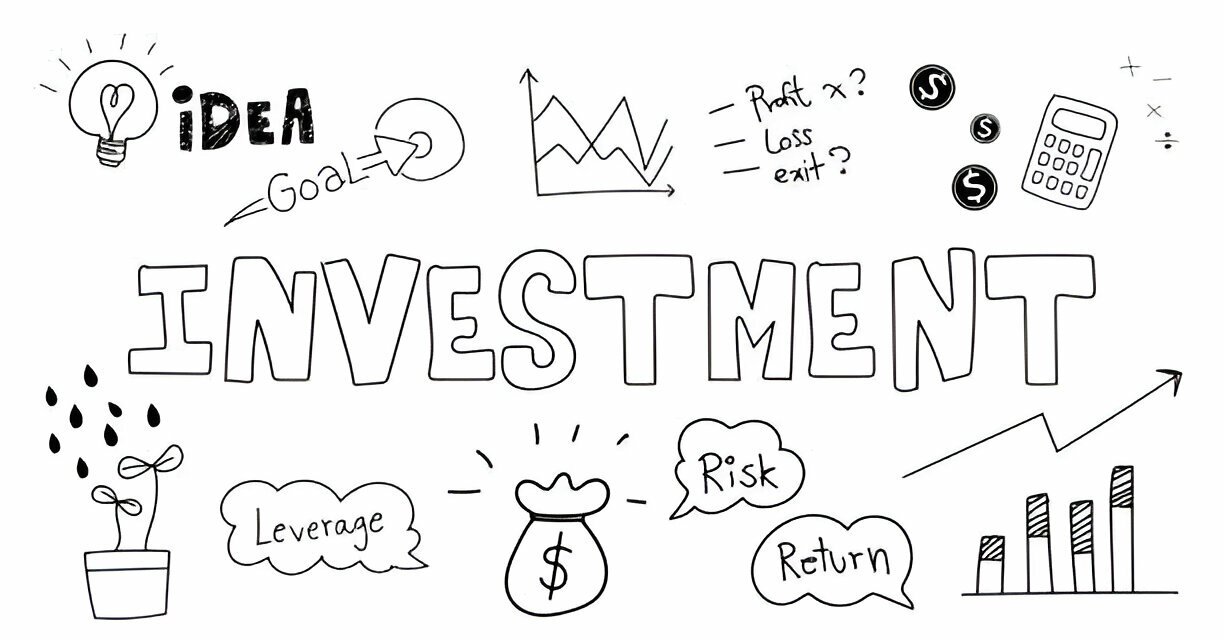Introduction
Money touches every part of our lives. Whether you’re buying groceries, paying a mortgage or planning for retirement, each decision ripples through your mental and physical wellbeing. Yet a growing number of people are feeling overwhelmed. In a recent global survey covering 17 countries, financial hope plunged from 60 % in 2024 to just 29 % this year. Inflation tops the list of worries for 56 % of respondents, followed by housing costs and healthcare. To cope, many are cutting back on spending and even reducing savings for emergencies, retirement or health care.
More From Mobelwealth: 7 Proven Strategies to Break Free from Debt and Secure Your Financial Freedom
It’s not just about dollars and cents; it’s about the way we feel. People with poor money knowledge report higher levels of stress, anxiety and even suicidal thoughts. Conversely, those who take the time to learn about finances tend to be more confident, healthier and more resilient. This article dives into why financial literacy is no longer optional, what it actually entails, and how you can build the skills to thrive amid uncertainty.
Why you should care
Financial decisions aren’t confined to Wall Street or accounting departments. They dictate whether parents can send a child to university, whether a family can weather a sudden job loss and whether a retiree can afford healthcare. When economic turbulence strikes – as it has in recent years – the gap between those who understand money and those who don’t widens dramatically. This guide will show you how to close that gap.
What you’ll learn
We’ll explore the fundamentals of financial literacy, the psychological and physical effects of financial stress, and the benefits of becoming financially savvy. Each section answers common questions about budgeting, saving, debt management, investing and more. By the end, you’ll have a clear roadmap to strengthen your money skills and a suite of resources to help you get started.
Understanding Financial Literacy
Financial literacy isn’t just a buzzword tossed around by bankers and educators. At its core, it means having the knowledge and confidence to make informed decisions about earning, spending, saving, investing and protecting your money. While definitions vary, most experts agree that financial literacy encompasses several interrelated abilities: budgeting to meet day‑to‑day needs, building emergency savings, managing debt, understanding interest rates and compound growth, investing for long‑term goals and planning for retirement.
One common misconception is that financial literacy is only for people with large incomes or significant assets. In reality, it’s essential for everyone. According to the Fintech Times survey, people with strong financial literacy are over five times more likely to feel confident navigating financial changes compared with those with weak literacy (28 % versus 5 %). That confidence isn’t about being wealthy; it’s about understanding how financial systems work and how to respond to change.
Another key element of financial literacy is evaluating risk. When you know how to read a loan contract, calculate interest or assess an investment’s risk, you’re less likely to be exploited. Moreover, those who improve their financial literacy report better physical and mental health. The link between money knowledge and wellbeing underscores that learning about finances is a form of self‑care.
People Also Ask: What does financial literacy include?
It includes understanding basic concepts like interest rates, inflation and budgeting; recognizing the difference between assets and liabilities; knowing how credit works; evaluating insurance options; and planning for taxes and retirement. Good financial literacy also involves being aware of consumer rights and recognising predatory practices.
Why Financial Literacy Matters Now
The world has become more volatile. Inflation and high living costs have put pressure on budgets, while geopolitical conflict and rapid technological change add uncertainty. In the Fintech Times survey, 56 % of people listed inflation as their top concern, with housing and healthcare costs close behind. These concerns aren’t limited to any one country; they resonate across continents. When prices rise and incomes stagnate, households with low financial literacy are forced to make difficult trade‑offs, often sacrificing long‑term security for short‑term survival.
Financial literacy helps you adapt. If you understand how inflation erodes purchasing power, you’re more likely to seek out savings accounts or investments that keep pace with rising prices. When interest rates fluctuate, you can decide whether to refinance a mortgage or lock in a fixed rate on a loan. And when news headlines scream about market crashes, you’re less likely to panic sell investments because you know volatility is normal and long‑term strategies matter.
The stakes are higher than ever because economic changes can be swift and unpredictable. A sudden job loss, a health crisis or a natural disaster can derail even the most carefully laid plans. With strong financial literacy, you’ll have tools to build emergency funds, choose appropriate insurance and diversify income streams. In short, financial literacy empowers you to respond to shocks instead of being blindsided by them.
People Also Ask: Why is financial literacy important today?
Financial literacy is crucial because it allows individuals to make informed decisions amid economic volatility. It equips people to handle rising costs, adjust spending, evaluate credit and investment options, and plan for future expenses such as retirement and healthcare. Without it, people are more vulnerable to debt, predatory lending and financial scams.
Financial Stress, Mental Health and Money Knowledge
Financial stress is more than an abstract concept; it has real psychological and physical effects. The Fintech Times survey found that respondents with poor or very poor financial literacy were significantly more likely to experience stress (44 % versus 35 %), anxiety (37 % versus 28 %) and panic attacks (12 % versus 9 %). The same survey showed a small but troubling link between low financial literacy and suicidal thoughts. These findings echo broader research connecting money worries to sleep disorders, relationship strain and reduced productivity.
On the flip side, financial knowledge can protect mental health. The nudge Global report notes that people with strong financial literacy are significantly more likely to rate their physical and mental health as excellent. They also display more self‑control when it comes to risky investments. Understanding how money works reduces uncertainty, which in turn lowers stress. Even small improvements – like learning to track expenses or understanding how compound interest works – can boost a sense of control and reduce anxiety.
It’s important to recognise that financial stress doesn’t affect everyone equally. Women often report lower confidence in financial knowledge compared with men, and younger generations face unique pressures, from student debt to insecure employment. Recognising these disparities allows us to tailor education and support to those who need it most.
People Also Ask: How does financial literacy affect mental health?
Financial literacy lowers stress and anxiety by giving people a clearer understanding of their financial situation and options. When you know how much money is coming in, where it’s going and how to adjust, you feel more in control. This sense of control improves mental wellbeing and reduces the risk of panic, depression or conflict related to money.
Benefits of Financial Literacy: Confidence and Better Decisions
Knowing your way around financial concepts does more than ease anxiety; it leads to concrete benefits. According to nudge Global’s 2025 research, individuals with strong financial literacy are over five times more likely to feel confident navigating financial change. They are also more likely to avoid risky investments (36 % vs. 24 %) and recognize overconfidence in their decision‑making. These skills translate into better outcomes, whether you’re choosing a mortgage, investing in a mutual fund or deciding how much life insurance to carry.
Financially literate individuals tend to build larger emergency funds, invest for the long term and diversify their portfolios. Because they understand concepts like diversification, risk tolerance and time horizons, they’re less susceptible to speculative bubbles or get‑rich‑quick schemes. They also have a better grasp of credit and debt, using credit responsibly and paying lower interest rates over time.
Greater financial literacy benefits relationships and communities as well. The Fintech Times study noted that those with better money knowledge reported less tension in personal relationships. When couples share financial goals and understand their resources, they’re less likely to argue about spending. At the community level, improved financial literacy leads to higher savings rates and more stable households, which contributes to economic resilience.
More From Mobelwealth: Best Budget Apps for Couples in 2025
People Also Ask: What are the advantages of being financially literate?
Financial literacy provides a clear picture of income, expenses, assets and liabilities. It helps you set realistic goals, avoid high‑cost debt, seize investment opportunities, plan for emergencies and retirement, and make informed purchases. It also fosters confidence, reduces stress and improves relationship communication.
Key Pillars of Financial Literacy
Financial literacy is built on several core pillars. Mastering these basics will help you make smarter decisions at every stage of life.
- Budgeting and cash flow management. A budget isn’t a straightjacket; it’s a tool for awareness. Tracking income and expenses reveals where your money goes and helps you align spending with your values. Even simple methods, like the 50/30/20 rule (needs/wants/savings), can provide structure. Building a budget also means allocating funds for irregular expenses like car repairs or holidays.
- Saving and emergency funds. Inflation and economic shocks highlight the importance of savings. Aim to set aside at least three to six months of living expenses in a liquid, low‑risk account. This cushion reduces the need to rely on high‑interest credit in a crisis. Consider laddering savings into different accounts or certificates of deposit (CDs) to balance accessibility and yield.
- Debt management. Not all debt is bad. Loans can finance education, housing or business ventures, but high‑interest consumer debt can quickly spiral out of control. Understanding interest rates, loan terms and amortisation schedules allows you to prioritise paydown strategies, such as the avalanche or snowball methods. Refinancing or consolidating loans at lower rates can save money, especially when rates are trending down.
- Investing and wealth building. Investing grows wealth over time through compound returns. Basic investing literacy includes understanding stocks, bonds, mutual funds, exchange‑traded funds (ETFs) and the role of risk versus reward. Diversification across asset classes reduces volatility. Investing for retirement often involves tax‑advantaged accounts like 401(k)s or IRAs.
- Insurance and risk management. Insurance protects against financial shocks, whether from illness, accidents, natural disasters or liability. Understanding policy types (health, life, disability, property, liability) helps you tailor coverage to your needs. Reading policy documents and comparing premiums versus coverage is part of being financially literate.
- Tax and estate planning. Knowing how taxes work helps you keep more of what you earn. This includes understanding your tax bracket, available deductions and credits, and the implications of investment gains or retirement withdrawals. Estate planning ensures your assets are distributed according to your wishes and can minimise taxes for your heirs.
People Also Ask: What are the pillars of financial literacy?
The pillars include budgeting, saving and emergency funds, managing debt, investing and retirement planning, insurance and risk management, and tax and estate planning. Together these skills equip individuals to navigate daily expenses, long‑term goals and unexpected events.
Practical Steps to Improve Financial Literacy
Improving your financial literacy doesn’t require a degree in finance or a huge time commitment. The key is consistency and curiosity. Here are some practical ways to get started:
- Educate yourself with credible sources. Start by exploring trusted websites and books. For definitions and foundational knowledge, Investopedia offers clear explanations of financial concepts. Government agencies such as the Consumer Financial Protection Bureau provide free tools and guides on budgeting, credit and debt.
- Take a course or workshop. Many organisations, including community colleges and non‑profits, offer personal finance courses at low or no cost. Online platforms like Coursera and edX host courses on money management and investing, often taught by university professors.
- Use financial apps to track spending and savings. Mobile apps help you monitor expenses, set goals and even automate savings. They provide real‑time feedback that fosters awareness and accountability. Research shows that finance apps are growing rapidly, with millions of downloads per year, reflecting how people increasingly rely on digital tools to manage money.
- Consult professionals when needed. Financial advisors, credit counsellors and tax professionals can offer personalised guidance. When choosing an advisor, look for fiduciaries who are legally required to act in your best interest.
- Practice regularly. Financial literacy is like a muscle; it strengthens with use. Regularly review your budget, track your net worth and revisit your goals. Stay informed about changes in the economy, interest rates and tax laws.
People Also Ask: How can I improve my financial literacy?
Read books and articles from trusted sources, take online or community courses, use budgeting apps to track income and expenses, seek professional advice when needed and practise by making informed financial decisions. The key is continuous learning and applying what you learn to your own situation.
Financial Literacy Around the World: Global Perspectives
Financial literacy levels vary widely around the world, and cultural contexts shape how people approach money. In the Fintech Times survey, inflation was the top concern in most countries, but energy costs topped the list in the UK, Germany, Italy, Argentina and Japan. The survey also showed that people’s spending adjustments differed by region: in the UK, 24 % of respondents said they were saving less for emergencies; in Japan, 30 % were saving less for retirement; and in China, 27 % were cutting health and wellbeing spending. These variations illustrate how economic conditions and social safety nets influence financial behavior.
Despite differences, a lack of financial literacy is a common obstacle. In North America, financial education in schools has grown: the number of U.S. states requiring personal finance courses increased from 21 in 2020 to 30 in 2023. However, gaps remain, particularly among women and low‑income communities. In emerging economies, mobile‑first banking and fintech solutions are expanding access to basic financial services, but education often lags behind technology.
International organisations such as the Organisation for Economic Co‑operation and Development (OECD) and the World Bank have launched initiatives to promote financial literacy worldwide. Their programs include financial education in school curricula, consumer protection regulations and awareness campaigns. Recognising and addressing cultural differences in money attitudes is essential for effective education.
People Also Ask: How is financial literacy different around the world?
Levels of financial literacy vary due to education systems, cultural attitudes toward money, government policies and economic conditions. Some countries emphasise budgeting and saving, while others focus on investing or entrepreneurship. Understanding these differences helps tailor education programs to local needs.
The Role of Employers and Institutions
Employers and educational institutions play a critical part in promoting financial literacy. The Fintech Times article notes that when employers provide financial education, it reduces stress, builds resilience and improves productivity. Employers can offer workshops on budgeting, savings plans and retirement benefits; they can also subsidise or provide access to financial counselling and digital tools. In the U.S., more companies are integrating financial well‑being programs into employee benefits packages, recognizing that financial stress reduces engagement and increases absenteeism.
Schools and universities are another important front. Mandating personal finance courses at the high school level ensures that young adults enter the workforce with basic money management skills. This movement has gained momentum in recent years, with more states adopting financial literacy requirements. Colleges can also offer elective courses or integrate personal finance modules into general education curricula.
Policymakers can support these efforts by funding financial education programs, enforcing clear disclosure on credit and investment products, and regulating predatory lending practices. Non‑profits and community organisations can fill gaps, particularly in underserved areas. Ultimately, a multi‑stakeholder approach is necessary to raise financial literacy at scale.
People Also Ask: What role do employers and schools play in financial literacy?
Employers can provide financial education programs, resources and benefits that encourage saving and investing. Schools can incorporate personal finance into curricula, ensuring that students learn budgeting, credit management and investing before entering adulthood. Both play a vital role in reducing financial stress and improving societal wellbeing.
Tools and Resources for Building Financial Literacy
To put financial literacy into practice, leverage the growing ecosystem of tools and resources.
- Budgeting apps and platforms. Apps such as Mint, YNAB (You Need a Budget), and Personal Capital track spending, categorise expenses and provide insights into saving patterns. Many banks also offer built‑in budgeting features within their mobile apps.
- Educational websites and calculators. Sites like and the Financial Educators Council offer free guides, quizzes and calculators. Government portals, including MyMoney.gov, provide comprehensive resources on budgeting, saving and investing.
- Books and podcasts. Titles such as The Total Money Makeover by Dave Ramsey, Your Money or Your Life by Vicki Robin and The Psychology of Money by Morgan Housel explore budgeting, debt reduction, investing and behavioural finance. Podcasts like “Planet Money,” “Afford Anything” and “How to Money” offer regular insights and real‑world stories.
- Financial coaching and counselling. Certified financial planners (CFPs), credit counsellors and financial therapists can provide personalised guidance. Some employers and community organisations offer free or subsidised coaching sessions.
- Community education programs. Libraries, non‑profits and local governments frequently host workshops on topics such as tax preparation, debt management and homebuying. These programs are often free and tailored to local needs.
People Also Ask: What are the best resources for financial literacy?
The best resources include trusted websites like Investopedia and government portals, mobile apps that track spending and savings, books and podcasts on personal finance, and courses offered by educational institutions or community organisations. Choosing resources that match your learning style and financial goals is key.
Conclusion
Economic turbulence, rising living costs and social change mean that financial literacy is more than a nice‑to‑have – it’s a necessity. As global surveys reveal, financial hope is waning and financial stress is rising. Yet the solution is within reach. People who invest in their money knowledge experience more confidence, fewer anxiety symptoms and better overall health. They navigate inflation, interest rate changes and unexpected expenses with skill and resilience.
We’ve explored what financial literacy is, why it matters and how it affects mental and physical wellbeing. We’ve highlighted the benefits of improved decision‑making, the key pillars of money management and the practical steps you can take to become more literate. We’ve also discussed the importance of financial education around the world and the roles employers, schools and policymakers play in promoting it.
Now it’s up to you. Start tracking your spending, read a book on personal finance, sign up for a workshop or talk to a trusted advisor. Share what you learn with friends and family so they, too, can experience the peace of mind that comes from financial knowledge. The sooner you begin, the sooner you’ll feel the difference.
FAQ
Q1: What is financial literacy and why is it important?
Financial literacy is the ability to understand and effectively use various financial skills, including budgeting, saving, investing, credit management and risk mitigation. It’s important because it enables people to make informed decisions, avoid debt traps, plan for emergencies and achieve long‑term goals. Without financial literacy, individuals are more vulnerable to predatory lending and financial stress.
Q2: How can financial literacy reduce stress?
When you understand your finances, you gain a sense of control. This reduces anxiety because you know how much money is coming in, where it’s going and how to adjust. Financial literacy also helps you anticipate and manage risks through savings and insurance. People with higher financial literacy levels report lower rates of stress and anxiety thefintechtimes.com.
Q3: What are the main components of financial literacy?
The main components include budgeting, saving and building emergency funds, managing and reducing debt, investing wisely, understanding insurance, and planning for taxes and estate transfer. Each component addresses a different aspect of your financial life, from day‑to‑day expenses to long‑term security.
Q4: How do I start improving my financial literacy?
Begin by setting simple financial goals and tracking your spending. Use reputable websites like Investopedia for definitions, and explore government resources such as MyMoney.gov. Consider enrolling in a personal finance course, using budgeting apps and seeking advice from certified professionals. Most importantly, practise regularly – review your finances monthly and adjust as needed.
Q5: Do employers and schools really make a difference in financial literacy?
Yes. Employers who offer financial education programs and benefits help reduce stress and improve productivity. Schools that integrate personal finance into their curricula ensure that young adults start their working lives with essential money skills. A collaborative effort across workplaces and educational institutions can significantly raise financial literacy levels in society.












Loading comments...
Leave a Comment(Login required)